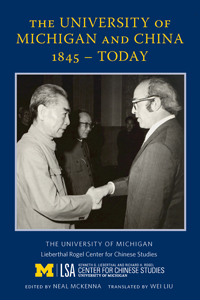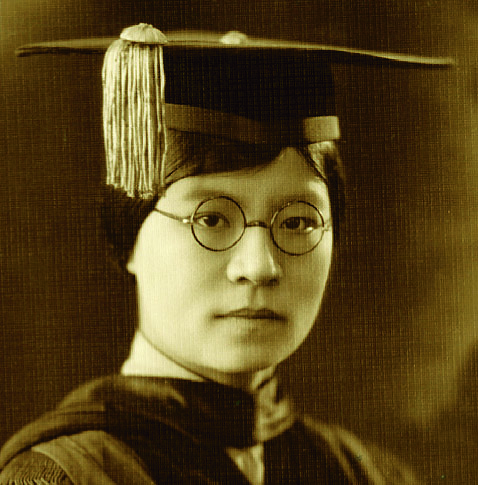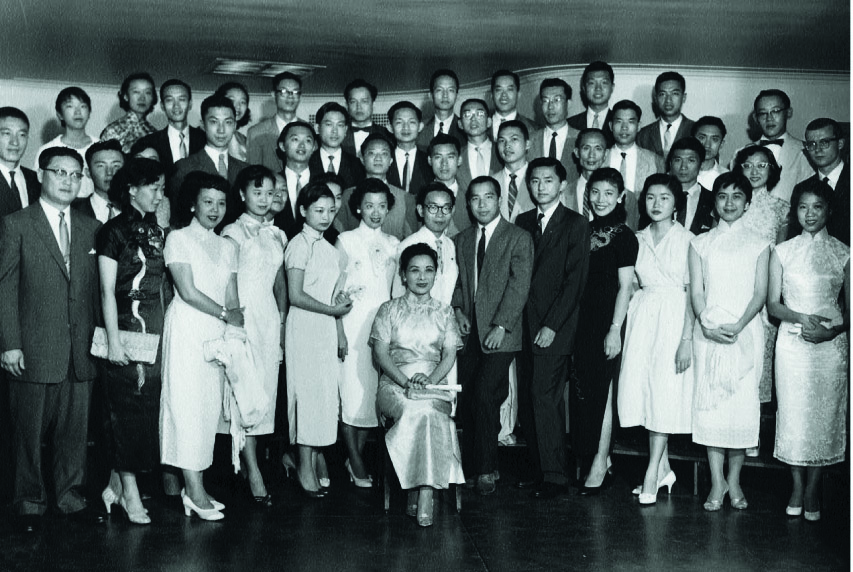
The University of Michigan and China 1845-Today
Skip other details (including permanent urls, DOI, citation information): This work is licensed under a Creative Commons Attribution-NonCommercial-NoDerivatives 3.0 License. Please contact [email protected] to use this work in a way not covered by the license.
For more information, read Michigan Publishing's access and usage policy.
Michigan and China: The Early Twentieth Century
The formal establishment of the Barbour scholarship program was not completed -until 1917, but the arrival of Asian women under Barbour’s sponsorship started as early as 1914, and it was not long before Chinese women constituted the majority of these scholars. Most of them returned to China After receiving degrees from the University of Michigan, with many further devoting themselves to the education of women by becoming teachers in women’s colleges in China. Two of them became college presidents.

One of them, Wu Yi-Fang (PhD, 1928), was the first female college president in China, leading Ginling College from 1928 to 1951 before it was combined with the University of Nanking.
While Chinese students continued to enroll in relatively strong numbers at the University of Michigan, American students at the university were realizing a steadily growing interest in the East, particularly Japan and China. The year 1930 saw the establishment of the Department of Oriental Languages and Literatures at the University of Michigan. In 1936, an interdepartmental Oriental Civilizations Program was initiated, and by 1938 the program had extended to offer both MA and PhD degrees. It was also in the 1930s that the university started instruction in the Chinese language, and courses were also offered on the Chinese economy and the art of China.
The University of Michigan Law School has perhaps the richest history in interactions with China of any U.S. law school. Beginning in the early 1900s, several of China’s leading legal academics, judges, -lawyers, and constitutional scholars traveled to Ann Arbor to deepen their understanding of the Anglo-American legal tradition. Between the school’s establishment in 1859 and its centennial in 1959, the Law School had more students from China than from any other foreign country.
One of the best known was John C. H. Wu, the principal drafter of China’s 1946 constitution, who came to Michigan’s Law School as part of an exchange with the Dongwu Law School in Suzhou. Prior to World War II, Michigan’s Law School provided three deans for the Dongwu Law School, one of China’s most prestigious law schools, and now part of Suzhou University.
In 1949, the Chinese Communist Party defeated the forces of the Chinese Nationalist Party and took charge of the country. The Chinese Nationalist Party relocated to Taiwan, and the Chinese Communist Party founded the -People’s Republic of China (PRC) on October 1, 1949. Due to ideological differences between the governments of the PRC and the United States, official exchanges and communications between mainland China and the United States stopped abruptly. For the next three decades politics limited but did not stop the relationship between the University of Michigan and China.
In 1958, Soong Mayling, wife of Chiang Kai-shek, visited the University of Michigan to deliver a speech and to meet with students from Taiwan. During the 1960s, U-M Professor of Philosophy and China specialist Don Munro studied with Tang Junyi at the New Asia College in Hong Kong (now part of the Chinese University of Hong Kong) and became part of the Tang “-family” or lineage of scholars of Chinese philosophy. -Today the Tang Junyi Postdoctoral Fellowship in Chinese Philosophy is sponsored by the Kenneth G. Lieberthal and Richard H. Rogel Center for Chinese Studies (LRCCS) thanks to Professor Munro’s generosity and legacy.

In the 1950s and 1960s, Chinese studies continued to grow steadily at the University of Michigan. This interest was reflected by the establishment of the Department of Far Eastern Languages and Literatures, the receipt of the Freer Fund for the Study of Oriental Art, and the establishment of the Center for Chinese Studies in 1961. By 1961, the university’s College of Literature, Science, and the Arts had six full-time faculty teaching and conducting research on China in such areas as language and Literature, sociology, history, and art history. The Chinese language collection at the Asia Library had grown to 30,000 volumes. That year, the Center for Chinese Studies (CCS) was established with an endowment from the Ford Foundation. Professor Albert Feuerwerker, an influential and important historian of China, was named the first director of the Center for Chinese Studies, and was the longest-tenured director in the Center’s history.
Since the founding of the Center, the university has experienced a significant growth in the Chinese studies program, which quickly gained international prominence. This introduced an era in which the University of Michigan became a national leader in Chinese studies. Graduates achieved key jobs available throughout the country and abroad; leading academics requested to come to U-M as visiting scholars; and faculty members often debriefed analysts in government and ran seminars for business leaders. Some faculty members even served as important advisors to U.S. presidents and other high-level government officials. It was only natural, then, that those with a connection to the University of Michigan would play an important role as the relationship between the United States and the People’s Republic of China began to normalize in the 1970s.



